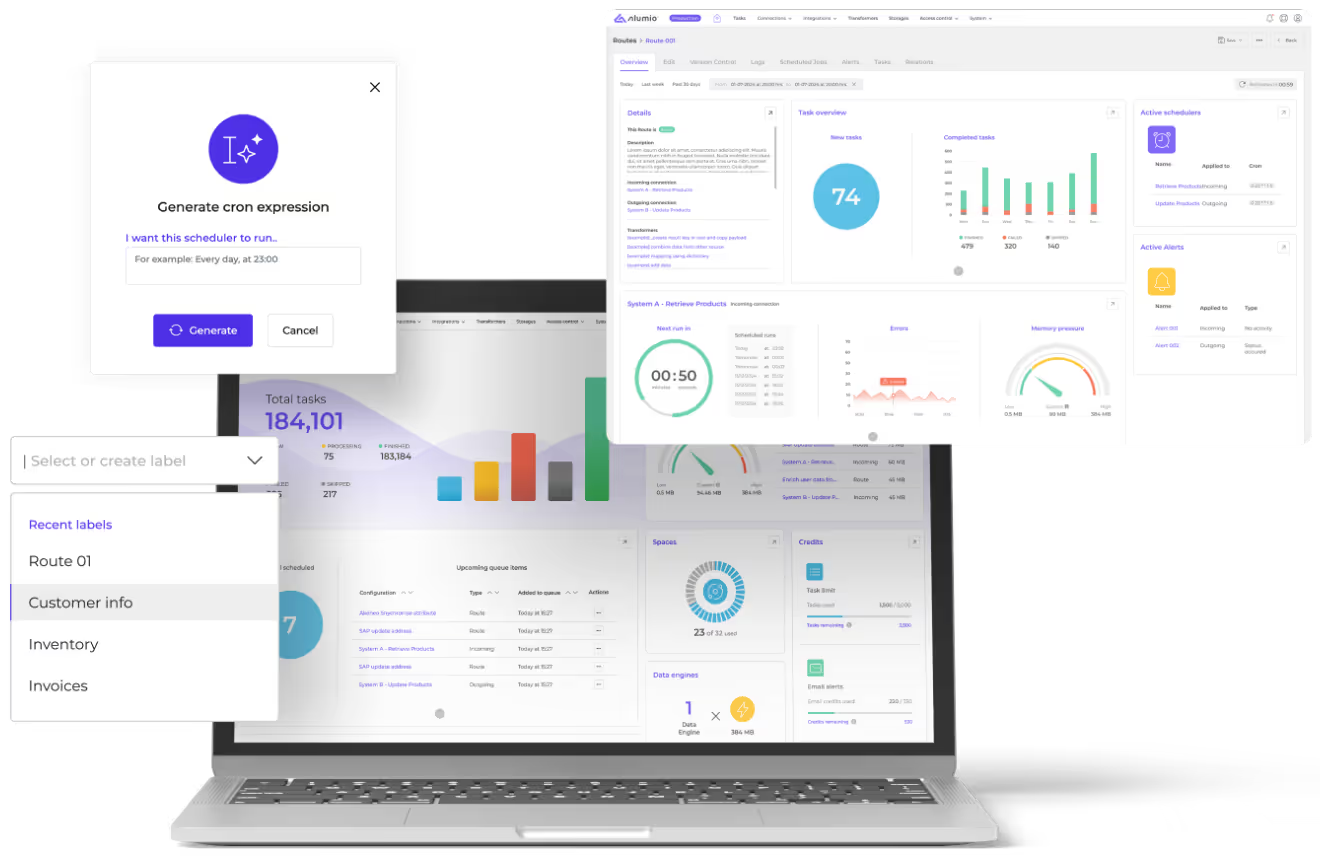Why AI-powered integration platforms are essential for business success in 2025
The numbers tell a compelling story about AI's business impact. More than three-quarters of organizations now use AI in at least one business function, while Analytics Insight projects that by 2025, 80% of organizations will implement intelligent automation incorporating AI capabilities that can handle increasingly complex, judgment-based tasks.
But here's what the statistics don't reveal: the companies seeing the biggest AI returns aren't just using more AI tools; they're using them more intelligently. They've created integrated AI ecosystems where data flows seamlessly between applications, insights trigger automated actions, and every AI investment amplifies the others.
The difference between AI success and AI disappointment often comes down to integration strategy. Organizations that treat AI tools as isolated point solutions struggle to scale their impact. Those that build connected AI ecosystems through smart integration platforms are seeing transformational results.
Real-time data integration: The foundation of intelligent automation
Modern AI thrives on fresh, contextual data. Whether you're running predictive analytics, powering recommendation engines, or deploying conversational AI, the quality and timeliness of your data directly impacts AI performance. This is why real-time data integration has become non-negotiable for AI-driven businesses.
Traditional batch processing simply can't keep up with AI's appetite for current information. When your AI customer service bot can't access the latest order status, when your predictive inventory model is working with yesterday's sales data, or when your personalization engine doesn't know about recent customer interactions, you're not just missing opportunities; you're creating poor experiences that damage customer relationships.
Real-time data integration ensures your AI tools always have access to the most current information across all your systems. Customer interactions in your CRM instantly inform your marketing automation AI. Sales data immediately updates your demand forecasting models. Support tickets automatically trigger relevant AI workflows across departments.
API management platforms: The nervous system of AI ecosystems
As businesses deploy more AI tools, the complexity of managing connections between systems grows exponentially. Each AI service needs secure access to relevant data sources, the ability to trigger actions in other applications, and seamless communication with both legacy systems and modern cloud services.
This is where robust API management platforms become crucial. They provide the governance, security, and reliability needed to safely connect AI tools with business-critical systems. More importantly, they enable the kind of sophisticated AI workflows that deliver real competitive advantages.
Consider a modern e-commerce operation: AI-powered demand forecasting needs to pull data from sales systems, inventory management, and external market data sources. It then needs to trigger automated purchase orders, update marketing campaigns, and adjust pricing strategies across multiple channels. This level of orchestration requires an API management platform that can handle complex workflows while maintaining security and reliability.
Data transformation platforms: Making AI-ready data accessible
AI tools are notoriously picky about data formats. Your machine learning models expect clean, structured datasets. Your natural language processing tools need text in specific formats. Your computer vision systems require images in particular resolutions and file types.
Meanwhile, your business systems store data in dozens of different formats, structures, and schemas. Customer information lives in your CRM in one format, while the same customers appear in your e-commerce platform with different field names and data types. Product information exists in your ERP system with technical specifications, while your marketing tools need the same products described in customer-friendly language.
Data transformation platforms bridge this gap by automatically converting data between formats, cleaning inconsistencies, and enriching information as it flows between systems. This isn't just about technical compatibility; it's about ensuring your AI tools have access to the highest quality data possible, which directly impacts their performance and reliability.
Workflow automation platforms: Where AI meets action
The most powerful AI implementations don't just generate insights; they act on them. This requires workflow automation platforms that can translate AI outputs into business actions across multiple systems and departments.
Organizations nowadays are focusing on workflow automation to drive operational excellence, and the most successful implementations combine AI intelligence with automated execution. For example:
- Fraud alert? Freeze the account. Notify relevant teams. Initiate investigation workflows
- Negative review? Launch personalised outreach. Alert customer success team. Adjust future communications strategy.
This level of intelligent automation requires platforms that can handle complex, multi-step workflows while integrating with both AI services and traditional business applications. The goal is creating systems that think and act simultaneously, reducing the time between insight and action from hours or days to seconds.

























